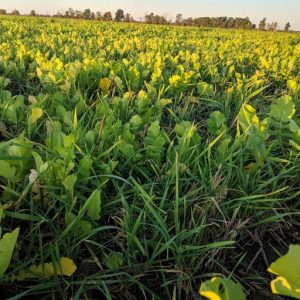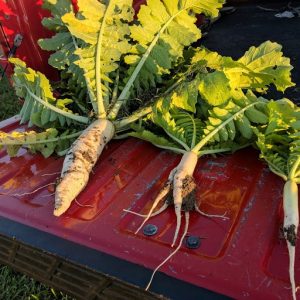Conservation, Homepage Slider, Water Quality
Cover Crops and Water Quality
By Dusty Sonnenberg, CCA, Ohio Field Leader: a project of the Ohio Soybean Council and soybean checkoff.
Cover crops can directly impact water quality. With all the attention being given to improving water quality and reducing nutrient loads going into Ohio’s waterways, farmers are encouraged to consider a multifaceted approach of best management practices (BMP’s) that include the use of cover crops.
In the most recent “Water Quality Wednesday” program, Rachel Cochran, Water Quality Associate with OSU Extension, shared six key points to consider when evaluating the benefits of planting cover crops to improve water quality. “Cover Crops can directly impact water quality,” said Cochran. “Cover crops can prevent soil erosion.
They absorb excess nutrients. Once the cover crops die and decompose, those nutrients are returned to the soil in a usable form for other plants. They can increase soil aggregate stability. The cover crops compete with weeds for sunlight and nutrients. The cover crop roots help alleviate compaction.”
Cover crops can prevent the erosion of soil. “The use of cover crops will prevent soil particles from entering nearby waterways,” said Cochran. “They slow the velocity of water moving off the field. The vegetation protects the soil from the impact of the rain drops. The roots of the cover crops, even those winter killed, help to hold the soil in place, preventing the soil particles from reaching the water. This keeps the nutrients attached to those soil particles out of waterways.”
Cover crops absorb excess nutrients, and then return them to the soil. “The grass and non-legume cover crops take up nutrients left over from the growing season,” said Cochran. “They also prevent losses from the field via runoff. The grasses and non-legumes increase the amount of nutrients available for the next cropping season by taking up nutrients in the soil and holding them in plant tissue until they are released the following spring when the plants are terminated or winter killed. They break down into a form that can be used by the following cash crop.”
Legume cover crops also return nutrients to the soil. “Legume crops fix nitrogen (N),” said Cochran. “All cover crops contain carbon (C). Different cover crops have different C:N ratios. Economically, they can decrease fertilizer costs by reducing the amount of fertilizer needed, and decrease runoff of surface applied fertilizers by reducing the amounts used.”
Cover crops increase soil aggregate stability. “Cover crops, in collaboration with mycorrhizal fungi, produce glomalin. Glomalin helps increase aggregate stability and improves soil structure,” said Cochran. “Decomposing material can improve soil organic matter (OM) which improves aggregate stability. Increased soil organic C increases soil OM. The increase in OM increases the water infiltration and water holding capacity of the soil. It also allows nutrients and sediment to be better held in place.”
Herbicide resistant weed management is another benefit to cover crops. “Cover crops compete with weeds for nutrients and sunlight,” said Cochran. “There is also a property known as allelopathy in which they release a chemical the reduces shallow small seeded weed germination. This reduces herbicide use and expense. There is also less of a chance of the herbicides entering streams or ditches.”
Cover crops can help alleviate compaction. “The taproots of certain cover crops will penetrate deep into the soil,” said Cochran. “The fibrous roots of others will work laterally and vertically through the soil.  These help to break-up the plow pan layers. They also improve water infiltration, which decreases surface run-off.”
These help to break-up the plow pan layers. They also improve water infiltration, which decreases surface run-off.”
A great resource is the Cover Crop Selector Tool from the Midwest Cover Crop Council.
http://mccc.msu.edu/selector-tool/
The selection tool has new platform that was updated late in 2020 to be mobile friendly.